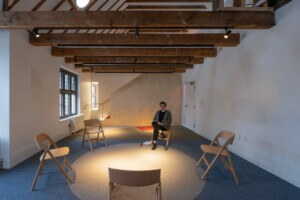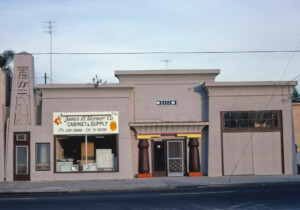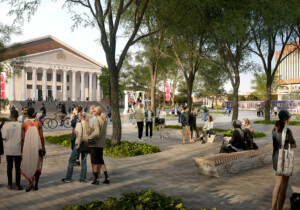UC San Diego is building itself a front door.
The Pepper Canyon Amphitheater and Public Realm project, spearheaded by current chancellor Pradeep Khosla, is a restructuring of the physical campus, nestled between the Pacific coastline and Interstate 5. The San Diego Union-Tribune reported that the top 10 research university aims to become more welcoming to visitors and to better interact with neighbors.
The university has added over 11,000 students in the past decade despite a statewide slashing of funds to the UC school system. The master plan includes building a grand entrance to the campus that organizes circulation while also creating a visually striking first impression. The “doorway” is expected to include a new 3,000 seat pavilion and amphitheater, a sculptural “walkway of words,” and an interactive swing set by visual artist Ann Hamilton. Additionally, a projected $761 million worth of new buildings will surround it, from a design and innovation center to a freestanding tower for alumni gatherings.
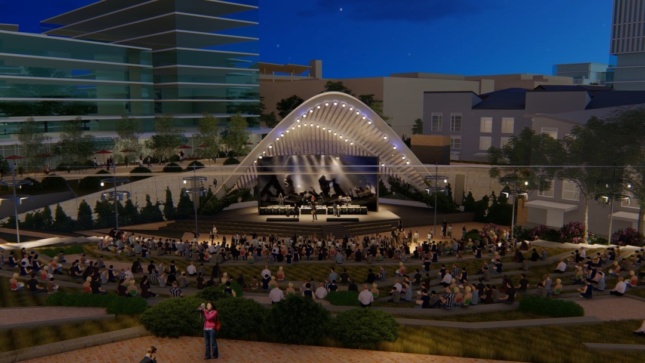
These new projects seek to create what students and faculty feel that the campus has always lacked: an energetic downtown, connecting students to the campus as well as to the surrounding community.
At the center of the design philosophy is the use of public transportation for both students and visitors. There are consistent complaints about parking availability on campus, with some commuter students arriving at school by 5:00 a.m. just to get a spot and then sleeping in their cars until class.
The development of San Diego’s Blue Line, a trolley system connecting the university with the city, has the potential to alleviate some of this commuter stress as the campus grows. With its expected completion by 2021, new buildings and plazas are being planned adjacent to the trolley, encouraging alternative transit while also inviting visual interaction between the campus and riders. The new building designs boast large windows overlooking the trolley so commuters are able to see inside workshops and labs, observing students creating and researching. The projects intentionally define a whole new meaning to the word transparency.
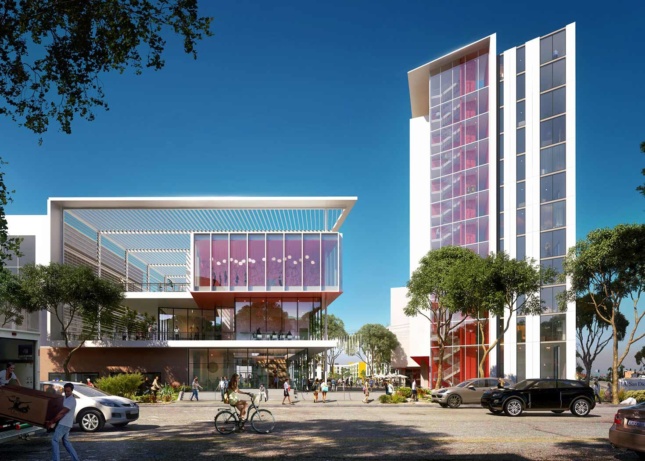
Chancellor Khosla told the Union-Tribune he hopes that this focus will help eliminate the “urban island” syndrome that UCSD has acquired, existing on a geographic site that was always meant to be isolated. The La Jolla site of UCSD was historically occupied by a Marine Corps training base called Camp Matthews. The site is situated between the ocean’s coastal cliffs and a major highway, Interstate 5, with increasing pressure in the surrounding areas from tech company campuses and residential sprawl each year.
However, Khosla is the first of the school’s chancellors to actively advocate for community interaction on campus, welcoming in neighbors and visitors rather than pushing them out.
“Anybody who comes to San Diego should have this campus as a destination in addition to Balboa Park or the Gaslamp district,” he said to the Union-Tribune.
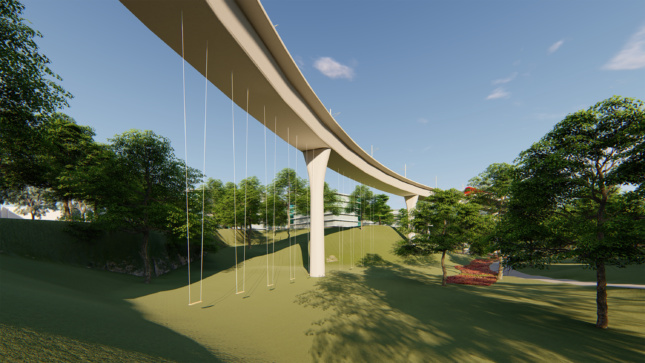
Critics of his open campus plan point out potential distraction on campus for students or security issues arising from homeless populations on public transit. But Khosla and his supporters see the public transport and tourism opportunities as a natural evolution for an increasingly urban campus.
“We can’t be afraid of that and close the campus to everybody,” he said. “That would be a disaster.”








